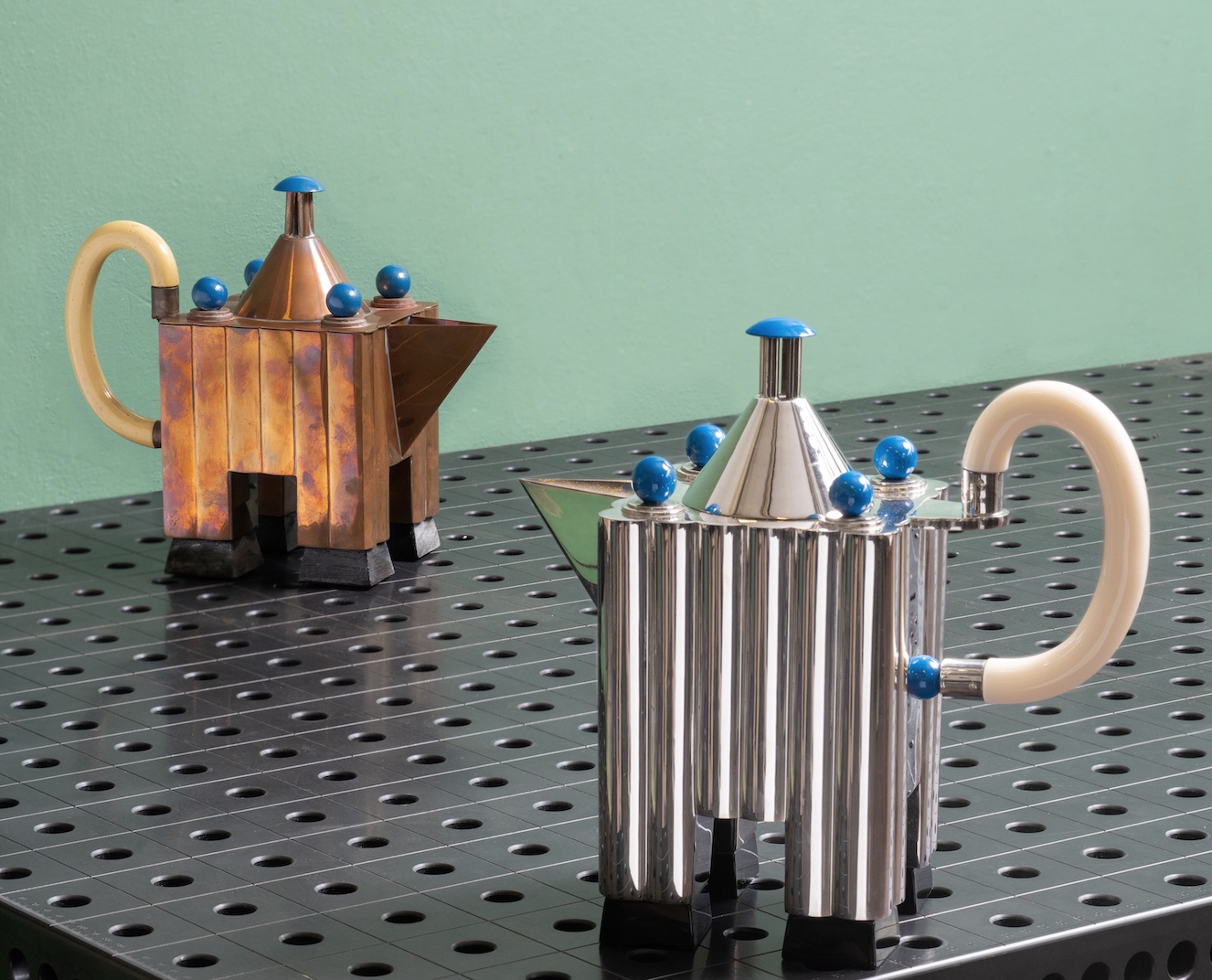The Silver City: Michael Graves’s experimental 1983 Tea and Coffee Piazza for Alessi explores a spatial and architectural reimagining of the tea and coffee set that takes it far beyond the realm of function
 Photography by Delfino Sisto Legnani
Photography by Delfino Sisto Legnani
Words by Alexia Petsinis
And they all lived happily ever after inside the Tea & Coffee Piazza. Or at least, that’s the feeling one gets when observing the ‘micro architecture’ of a peculiarly charming tea and coffee set designed by Michael Graves in 1983 as part of a special project by Alessi. Exploring a dialogue between architecture and design through the ‘transcultural’ and ceremonial lens of tea and coffee service, Alessi’s research project granted 10 architects, including Graves, the joyous freedom to design a tea and coffee set unrestrained by the ‘logic’ of mass production.
One of the most universal daily rituals – tea and coffee service – was the fundamental prompt that inspired a reimagining of the design language of household objects including a teapot, a coffee pot and, of course, the tray on which they are served. So, what happened when Alessi gave American architect and designer Michael Graves (1934-2015) free rein in the experimental playground of its ‘dream factory’, with an open invitation to reimagine the tea and coffee set as objects beyond the functional realm?
A sublime silver utopia, that’s what happened. Graves created a micro-city of little ‘buildings’ resembling the forms of home-baked treats, nestled snugly in the tray’s wholesome circular space – the piazza. His design response to the research project is comforting in the domestic familiarity of its silhouettes, colour accents and curved surface forms, while simultaneously evoking a design narrative of a strangely distant place we might inhabit in a daydream, or in a future vision.
With its curious trimmings of blue aluminium droplets and mock ivory handles, one almost expects to see little creatures wearing denim overalls and sugar-cube hats marching out from under the objects’ black Bakelite feet. Although one of those intriguing design gestures that appears have built itself into existence, every curve, nook and crevice of Graves’s resplendent silver ecosystem was crafted by hand at Alessi’s design factory.
Such forms simply could not have been realised through an industrial process. And evidently, when an everyday object like a teapot comes under the silver spell of design exploration, international creativity and handcrafted artistry, it assumes a certain emotional resonance that entices viewers in the allure of ‘what if’ worlds.
 Photography by Delfino Sisto Legnani
Photography by Delfino Sisto Legnani
The objects used for tea and coffee service have been an enduring and universal source of intrigue for innovators throughout the history of applied art and design, including during the Wiener Werkstätte and the Bauhaus periods. By aligning the physical object of the tray with the concept of the piazza, Alessi’s project prompted designers to explore its symbolic value as both a shared space and a shared experience.
The piazza, an open public space, a meeting place, a construct with broad social and cultural resonance, is interpreted through both a playful aesthetic and conceptual lens in Graves’s design, which evokes his celebrated ability to blend diverse threads of thematic inspiration into a new and distinct design language. It’s a language that continues to captivate people from all walks of life today.
‘Between the 1980s and 1990s he [Graves] revealed the incredible ability to tune into the tastes of the public; this is why I consider him to be a forerunner of the “Super & Popular”, the design that seeks the artistic and cultural quality of a project joined with the possibility of being understood by a vast public,’ wrote Alberto Alessi in his book La Fabbrica dei Sogni: Alessi dal 1921 (2016).
Graves, who also created Alessi’s bestselling 9093 kettle with its iconic bird- shaped whistle, designed with both formal rigour and an endearing sense of playful curiosity. His approach encapsulated Alessi’s legacy of creating objects that engender joy, inspire creativity and nurture enduring emotional connections with users – from the teapot, to the milk pot and well beyond. About time for a cuppa, isn’t it?
Read more in ICON 214: The Winter Issue. Get a curated collection of architecture and design news like this in your inbox by signing up to our ICON Weekly newsletter


















